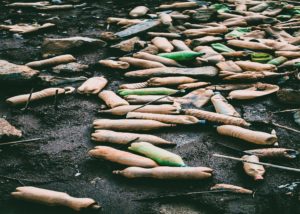Plastic is one of the most used products, and also one of the most harmful. As it affects our environment and wildlife more and more, we are now starting to understand the harmful impact it is having. We are starting to see a “no plastic” movement growing around us. From Starbucks getting rid of plastic straws, to the increased use of reusable water bottles. When it comes to getting rid of plastic, its more desirable traits, durability and effectiveness are also its greatest liabilities. Since plastic is so hard to get rid of, why don’t we just recycle it into something useful? But first, let’s take a look at why plastic has such a negative impact.
Negative Effects Of Plastic
- The disposal of plastic has the biggest negative ecological impact.
- Aquatic life is endangered with suffocation and ingestion
- Release of toxic chemicals into the environment and animals consuming them.
- Chemicals from plastic that are in landfills can leak into our groundwater, increasing chance of disease and cancer.
One of the largest ecosystems that plastic affects is the ocean. Our trash and waste get dumped into the ocean or blown in from beaches. This not only impacts the animals that live in the ocean, but the ecosystem as well. Thankfully people are taking action, such as The Ocean Cleanup Project. Here are their words as to what they are doing to help clean up the oceans.
The Ocean Cleanup Project
“The system consists of a 600-meter-long floater that sits at the surface of the water and a tapered 3-meter-deep skirt attached below. The floater provides buoyancy to the system and prevents plastic from flowing over it, while the skirt stops debris from escaping underneath.
Both the plastic and system are being carried by the current. However, wind and waves propel only the system, as the floater sits just above the water surface, while the plastic is primarily just beneath it. The system thus moves faster than the plastic, allowing the plastic to be captured”
Putting Plastic To Use
While recycled plastic requires significant amount of water and energy for production compared to other resources, it has the potential to be an eco-friendly resource since it can be infinitely recycled and is very durable.
- Reusable bags
- Sandals
- Kitchen ware
- Yoga mat
- Houses- 3 companies Worldwatch Institute, Conceptos Plasticos, and EcoDom. They are well insulated, sturdy and the cost is 1/3 the price of a house made with concrete and bricks, which could help benefit 3rd world countries.
As we start taking steps in the right direction to clean up our plastic use and start recycling in ways that can benefit both humans, animals, and the planet, we are making a change for the better. Imagine a world with no more toxic chemicals in our drinking water, no more animals dying from being trapped in our trash, and more recycled goods that meet our needs. We can and are making this happen. We have done damage that cannot be reversed, but we can start fresh and help rebuild something that we decided to tear apart. If we all do our part, we can help make this world, a plastic-free world.
Photo by Simson Petrolon Unsplash
Sources:





